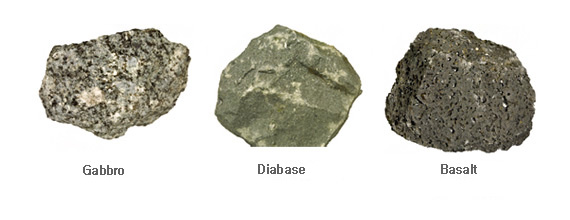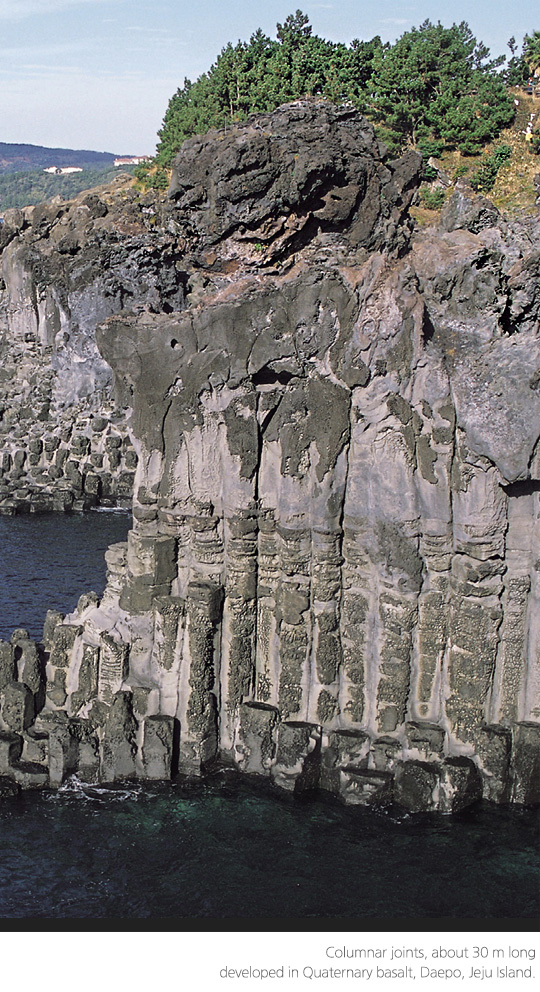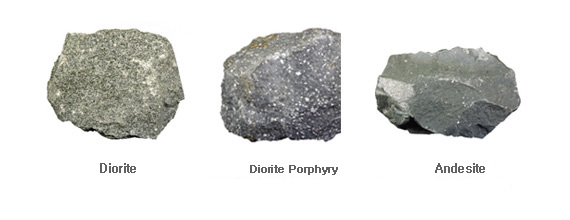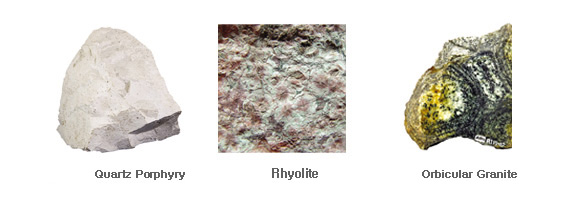Igneous Rocks
Igneous rocks are formed by cooling and solidification of molten material, magma, rising upward from the Earth's interior due to the density difference with the surrounding materials or rocks. Due to their origin, igneous rocks are extremely variable and therefore complicated to classify.
There are several systems for classification by simple visual examination during field surveys.
First of all, the depth at which solidification occurred is an important basis for classification because size and species of constituent minerals vary depending upon the depth and pressure at the time of solidification. When a magma cooled slowly at depth, coarse-grained plutonic rocks form but rapid cooling of magma at the surface results in glassy and fine-grained volcanic rocks. Secondly, the silica (SiO2) content is another base for classification because it is the most abundant chemical component in the crust. Consequently, igneous rocks are divided into ultrabasic, basic, intermediate, and acidic rocks in order of low to high silica content.

Basic Rocks


Intermediate Rocks
